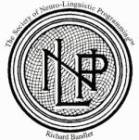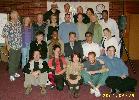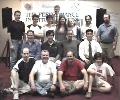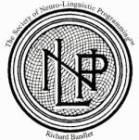 8 categories of basic NLP skills deemed essential by the creators of NLP and the Society of NLP.
8 categories of basic NLP skills deemed essential by the creators of NLP and the Society of NLP.
These basic NLP skills enable people to connect and converse easily with other people. Our NLP training includes:
Behavioral integration of NLP presuppositions.
Beliefs useful to Neuro-Linguistic Programmers for accomplishing desired results.
Calibrating through Sensory Experience
The process of learning to read another person’s unconscious, nonverbal responses in an ongoing interaction by pairing observable behavioral cues with a specific internal response.
 Elicitation of Well-Formed Goals, Direction and Present State.
Elicitation of Well-Formed Goals, Direction and Present State.
In NLP, a particular outcome is well-formed when it is: (1) stated in positives, (2) initiated and maintained by the individual, (3) ecological – maintains the quality of all rapport systems, and (4) testable in experience – sensory based.
Representational Systems (Sensory Predicates and Accessing Cues)
The five senses: seeing, hearing, touching (feeling), smelling and tasting. Recognizing and utilizing another person’s representations. Subtle behaviors that will both help to trigger and indicate which representational system a person is using to think with. Typical types of accessing cues include eye movements, voice tone, tempo, body posture, gestures, and breathing patterns.
Overlapping and Translating Representational Systems
Connecting the meaning of one representation to the same meaning in another representation. This process helps people gain a greater understanding by accessing meaning in more than one representation system.
Accessing and Building Resources
The ability to find and use states of mind like motivation, tenacity, compassion, love, confidence, creativity etc. Being able to call upon resources like these enables you to be in the appropriate state of mind to accomplish your outcome.
 Rapport Skills.
Rapport Skills.
Creating the presence of trust, harmony, and cooperation with the people your are communicating with. In some situations it is just as important to know how to break rapport as it is to know how to create rapport.
Verbal & Nonverbal Leading & Pacing
A method used by communicators to quickly establish rapport by matching certain aspects of their behavior to those of the person with whom they are communicating – matching or mirroring of behavior and then leading it.
